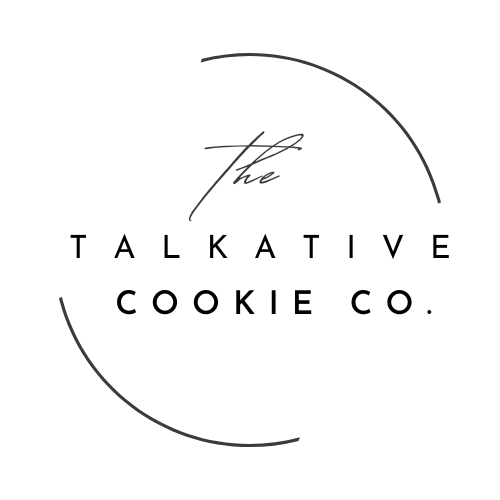In the world of delicious pastries and desserts, finding the perfect sustainable packaging is no piece of cake. But fret not, because we have gathered an array of innovative and eco-friendly packaging ideas specifically designed for cakes and pies. From biodegradable cake boxes to compostable pie containers, these packaging solutions not only preserve the freshness and delectable flavors of your baked goods, but also contribute towards a greener and more sustainable future. So, get ready to explore these delightful packaging options that will make your treats stand out while keeping the planet happy.
Benefits of Sustainable Packaging
Sustainable packaging offers several benefits, not only for the environment but also for businesses. By adopting sustainable packaging practices, you can reduce your environmental impact, improve your brand image, save costs, and meet the growing demand from environmentally-conscious consumers. Additionally, sustainable packaging allows businesses to comply with regulations set by various governing bodies, ensuring that they are operating within legal and ethical guidelines.
1. Biodegradable Materials
Using biodegradable materials for packaging can significantly reduce the environmental impact of your products. Compostable packaging, made from materials like cornstarch or sugarcane, can be broken down into natural elements when they are no longer needed. Plant-based plastics are another option, providing a biodegradable alternative to traditional petroleum-based plastics. Mushroom packaging, made from agricultural waste and mushroom mycelium, and seaweed-based packaging are also gaining popularity due to their sustainable nature.
2. Recyclable Materials
Choosing recyclable materials for packaging not only reduces waste but also contributes to a circular economy. Cardboard boxes, paperboard containers, glass jars, and metal cans are examples of recyclable packaging materials that can be easily repurposed. By using these materials, you ensure that your packaging can be recycled and reused, minimizing the amount of waste produced.
3. Minimalist Packaging
Minimalist packaging focuses on reducing unnecessary packaging materials and using simple and clean designs. By eliminating excessive plastic or Styrofoam, you can prevent unnecessary waste and reduce the environmental impact of your packaging. Minimalist packaging not only saves resources but also provides an aesthetically pleasing look that enhances your brand image.
4. Reusable Packaging
Reusable packaging offers a sustainable solution by encouraging customers to return and reuse packaging materials. Durable and washable containers can be designed to withstand multiple uses, reducing the need for single-use packaging. To incentivize customers to return packaging, businesses can offer rewards or discounts to those who bring back their empty containers. By adopting reusable packaging, you not only reduce waste but also foster a sense of responsibility among your customers.
5. Innovative Materials
Using innovative materials in packaging can revolutionize the industry by offering eco-friendly alternatives to conventional packaging options. Edible packaging, made from edible materials such as rice paper or seaweed, provides a creative and sustainable solution that eliminates waste. Water-soluble packaging, which dissolves in water, offers convenient and environmentally-friendly packaging for various products. Bioplastics, derived from renewable sources such as corn or sugar cane, provide a more sustainable alternative to traditional plastics. Liquid wood, made from wood pulp, is another innovative material that offers a biodegradable and renewable packaging option.
6. Upscaled Packaging
Upscaled packaging embraces creativity and sustainable practices by using repurposed materials. By giving new life to materials that would otherwise go to waste, businesses can create unique and eye-catching packaging designs. Collaborating with local artisans who specialize in upcycling can add a touch of craftsmanship and help support the local economy. Upscaled packaging not only reduces waste but also showcases your commitment to sustainable practices.
7. Renewable Energy Sources
Reducing the energy footprint of packaging production is crucial for sustainable practices. By utilizing renewable energy sources such as solar or wind power, businesses can minimize their reliance on fossil fuels and reduce greenhouse gas emissions. Investing in energy-efficient manufacturing processes further contributes to sustainable packaging by optimizing resource usage and minimizing waste.
8. Education and Information
Clear and accessible information is essential for promoting sustainable packaging practices. By providing detailed recycling instructions on your packaging, you enable consumers to dispose of the materials properly and ensure they are recycled. Additionally, educating consumers about sustainable choices, such as the benefits of using reusable or biodegradable packaging, can encourage them to make more eco-friendly decisions. Offering tips for reducing food waste also aligns with sustainable packaging practices, as it helps customers maximize the use of their products.
10. Consumer Awareness
Promoting the importance of sustainable packaging goes hand in hand with engaging consumers and encouraging them to make eco-friendly choices. Share information about the benefits of sustainable packaging through social media campaigns or educational materials. By actively involving your customers in the sustainability conversation, you can build a stronger brand image and foster a community of environmentally-conscious individuals. Offer incentives for customers who choose sustainable options, such as discounts or special promotions, to motivate them to support your sustainable packaging initiatives.
In conclusion, sustainable packaging offers numerous benefits for businesses and the environment. By adopting biodegradable or recyclable materials, embracing minimalist or reusable packaging, using innovative materials or upcycled designs, utilizing renewable energy sources, and investing in education and consumer awareness, businesses can reduce their environmental impact, improve brand image, save costs, meet consumer demand, and ensure compliance with regulations. Sustainable packaging is not only a responsible choice but also a strategic investment in a more sustainable future.
